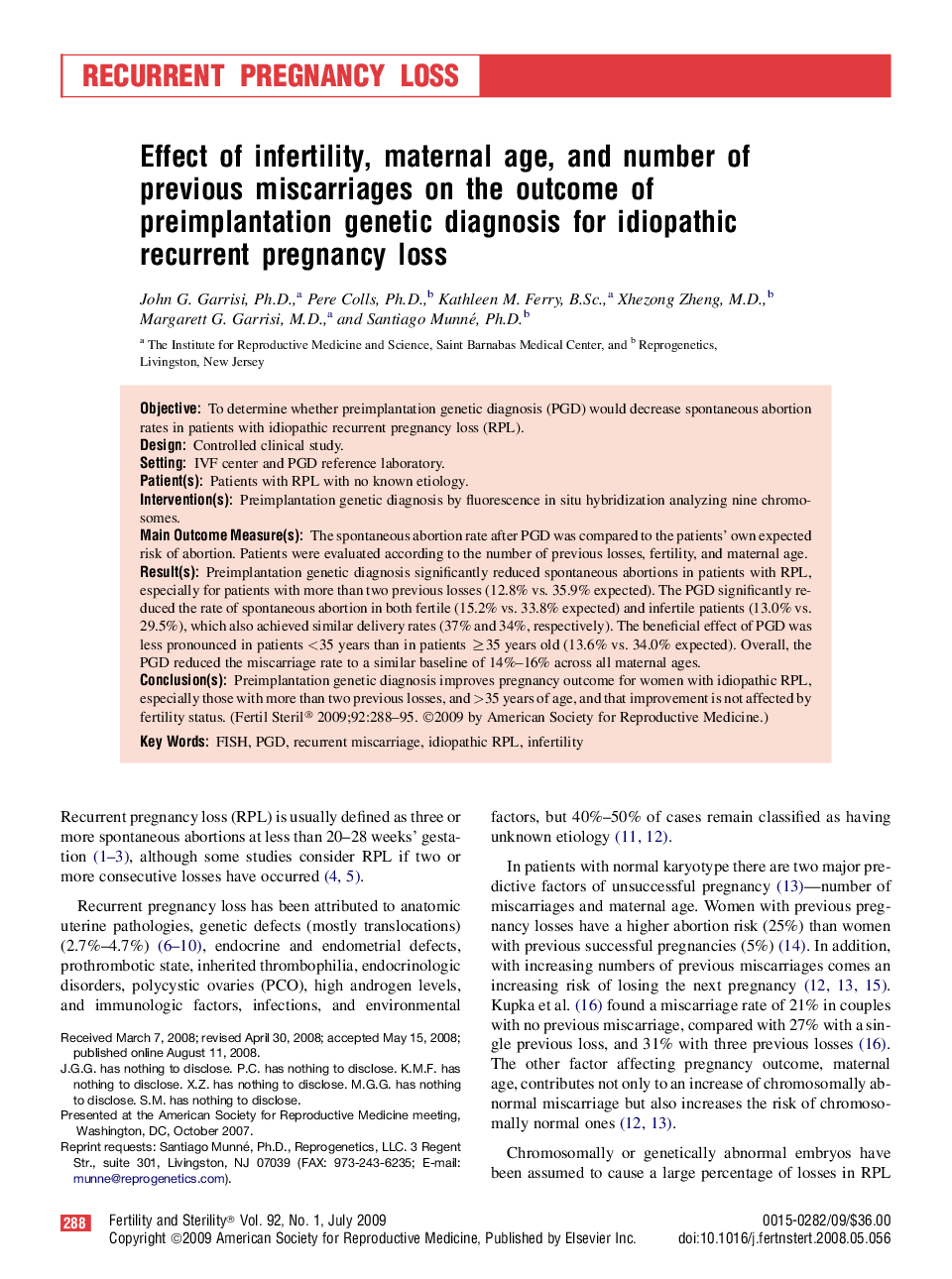| Article ID | Journal | Published Year | Pages | File Type |
|---|---|---|---|---|
| 3936875 | Fertility and Sterility | 2009 | 8 Pages |
ObjectiveTo determine whether preimplantation genetic diagnosis (PGD) would decrease spontaneous abortion rates in patients with idiopathic recurrent pregnancy loss (RPL).DesignControlled clinical study.SettingIVF center and PGD reference laboratory.Patient(s)Patients with RPL with no known etiology.Intervention(s)Preimplantation genetic diagnosis by fluorescence in situ hybridization analyzing nine chromosomes.Main Outcome Measure(s)The spontaneous abortion rate after PGD was compared to the patients' own expected risk of abortion. Patients were evaluated according to the number of previous losses, fertility, and maternal age.Result(s)Preimplantation genetic diagnosis significantly reduced spontaneous abortions in patients with RPL, especially for patients with more than two previous losses (12.8% vs. 35.9% expected). The PGD significantly reduced the rate of spontaneous abortion in both fertile (15.2% vs. 33.8% expected) and infertile patients (13.0% vs. 29.5%), which also achieved similar delivery rates (37% and 34%, respectively). The beneficial effect of PGD was less pronounced in patients <35 years than in patients ≥35 years old (13.6% vs. 34.0% expected). Overall, the PGD reduced the miscarriage rate to a similar baseline of 14%–16% across all maternal ages.Conclusion(s)Preimplantation genetic diagnosis improves pregnancy outcome for women with idiopathic RPL, especially those with more than two previous losses, and >35 years of age, and that improvement is not affected by fertility status.
